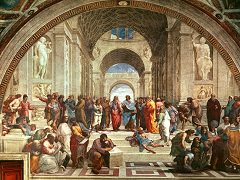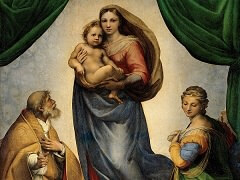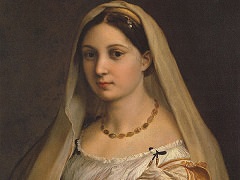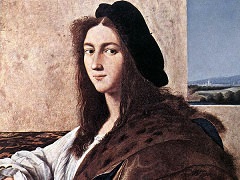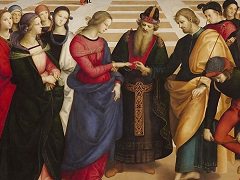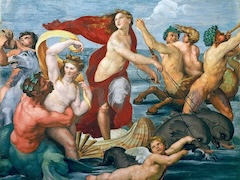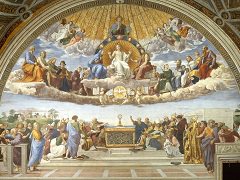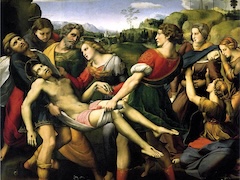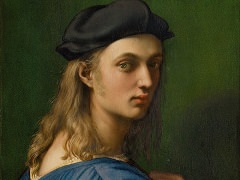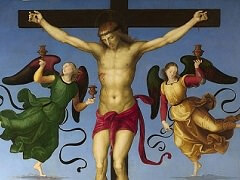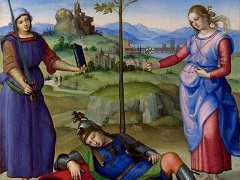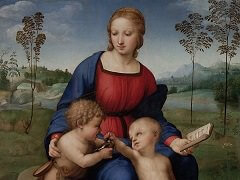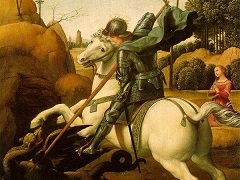Portrait of Baldassare Castiglione - by Raphael
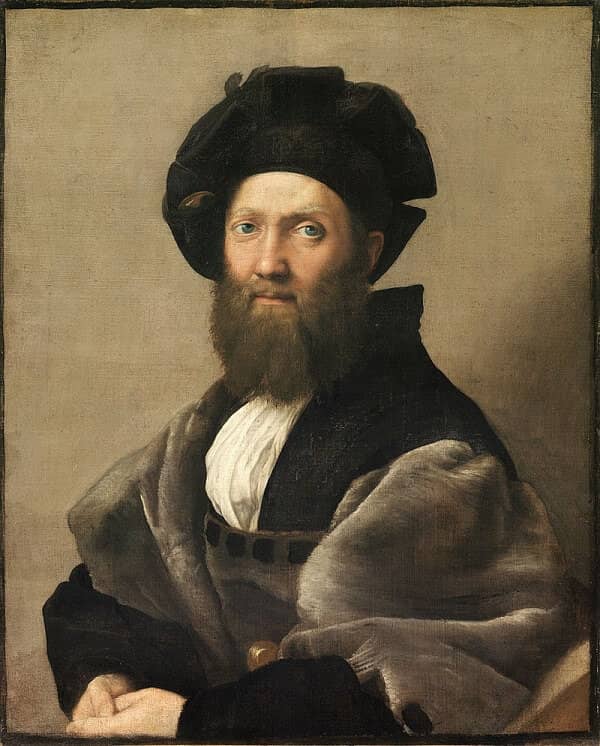
The portrait's subject is Baldassare Castiglione (1478-1529), poet, humanist, and ambassador, whom Raphael first met as a young man in Urbino. The portrait, originally painted on a wooden panel, was transferred to canvas and was probably cut down a few inches at the base, judging from seventeenth-century copies where the hands of the famous writer were fully shown. Castiglione's Book of the Courtier, finished in 1516 but published a decade later, is devoted to life and manners at the court of Urbino; Raphael is mentioned in it more than once. To be sure, Castiglione's list of great painters is revealing; he observes, "Consider that in painting Leonardo da Vinci, Sandro Botticelli, Raphael, Michelangelo and Giorgio da Castelfranco [Giorgione] are most excellent," and perceptively adds, "and yet they arc all unlike one another in their work." As Baldassare himself is in many ways a perfect model of a High Renaissance writer and gentleman, so Raphael's portrait of him is equally exemplary of High Renaissance portraiture.
Castiglione is shown in three-quarter profile from the waist up, seated in an armchair merely suggested in the lower right, hands folded and his gaze fixed on the viewer; this posture, as well as the soft luminescence that envelopes the portrait, are a subtle homage to the Mona Lisa. It is certain that Raphael saw the painting during Leonardo's stay in Rome before the latter left for France. But the respective atmospheres of the two works, and no doubt the ambitions of the men who painted them, are markedly different. Referring to this portrait in a Latin elegy dedicated to his wife, Castiglione himself made mention of the uncanny resemblance and the feeling of human presence it emits. Above all, it is the naturalness - the immediacy, freedom of carriage, and expressive vivacity - which make this life-like portrait so extraordinarily modern.

